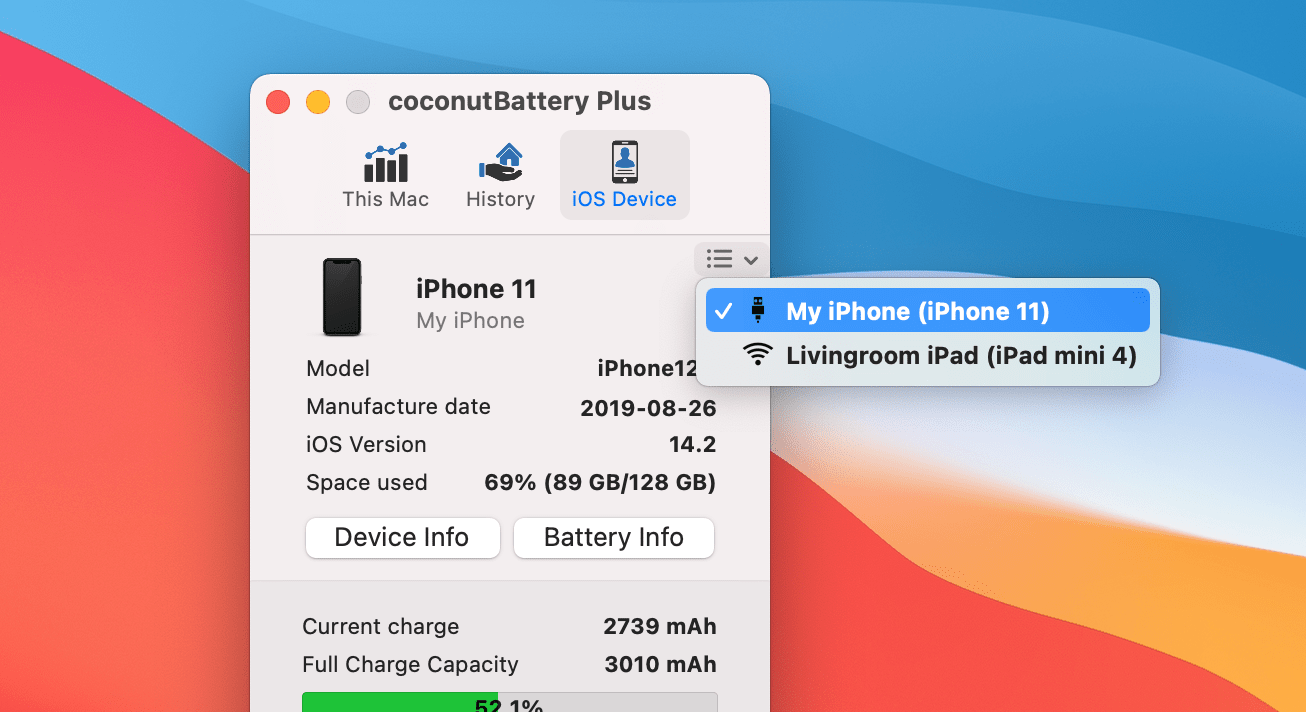

(Remember that Apple’s 1-year device warranty covers a battery that drops below 80 percent maximum capacity in that period, and AppleCare+ during any point while it remains in effect for Macs, iPhones, and iPads.) That means it’ll be certainly be due for a warranty replacement in a few months. Delivered in December 2020, at 8 months, it was already down to 92 percent capacity at 63 cycles at 10 months, right now, and 74 cycles, it can only hold 85 percent. This revealed to me that my M1 MacBook Air battery has taken a real hit, according to the History view in the app.

Despite its Spartan approach, the app is accurate and.
COCONUT BATTERY PLUS FULL
(Cycles measure 100 percent charge, so discharging 50 percent and recharging to full is a half cycle.) Coconut Battery is another stalwart of macOS battery monitoring tools that focuses on the basics. With coconutBattery running or every time you launch it, the app records statistics for the device’s age (based on a date Apple encodes in it), the current maximum percentage of design capacity (as Health), and the number of cycles it’s been charged. You can save the current state of the capacity of the battery, so you can assess the changes to it over time. The app shows you live information about your battery, such as how often it was charged and the current maximum capacity. But I recommend taking a look at the design capacity percentage regularly, too. coconutBattery provides you with the complete status of the health of your Apple Macbook's battery. They might help decide whether you should pack a USB battery pack, for instance, or charge for longer. Many of these statistics are useful to look at while anticipating going mobile for tens of minutes to several hours. CoconutBattery can also tell you a lot about the battery on an iPhone or iPad connected via USB or Wi-Fi.


 0 kommentar(er)
0 kommentar(er)
